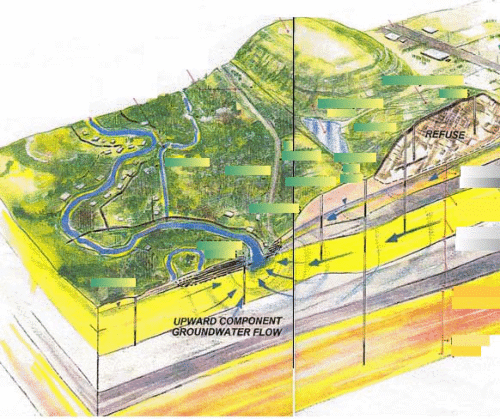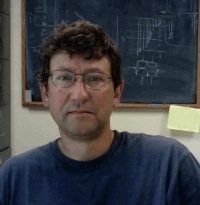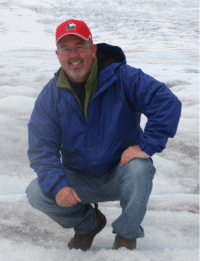DESIGNING AND OPTIMIZING GROUND WATER MONITORING SYSTEMS IN SEDIMENTARY SEQUENCES: PART 3: Case Studies Illustrating Efficiences and Failures
Join us for this new three-part webinar series dedicated to designing and optimizing ground water monitoring systems in sedimentary sequences. Each part is 90-minutes and allows for 1.5 Professional Development Hours (PDH). You receive a copy of the webinar slides and a free Record of Attendance Form to distribute to participants at your computer site location.
Discover the key applications for effective well placement and ground water monitoring system design in sedimenary stratigraphic sequences. Application of design efficiencies will apply to glacial, alluvial, and fluvial sedimentary environments.

Learn ways to optimize your ground water monitoring system by:
- Eliminating redundant monitoring wells
- Targeting laterally-continuous monitoring units and avoiding isolated sand lenses
- Avoiding invalid potentiometric surface maps
- Identifying meaningful monitoring units and placing effective wells
- Recognizing the water table in low permeable formations
- Making the right field observations and communicating them effectively
- Applying conditions from the case studies to your own scenarios and sites
The three-part series is presented in a step-wise process beginning with basic field testing and concluding with case studies of different sedimentary sequences to illustrate successes and failures of system design and optimization.
Part Three builds from Parts One and Two. In Part Three, we are going to apply the critical elements to case studies from different scenarios. We will apply aquitard integrity to monitoring systems and discuss the role of low-permeability units in optimizing ground water monitoring systems.
Webinar Highlights:
- Considerations for monitoring the water table, a case study
- Considerations for screen lengths and vertical well placement, a case study,
- Considerations for monitoring aquitards, a case study
- Considerations for monitoring thick sand sequences, a case study
- Considerations for the future and final remarks

"The webinar instructors are knowledgeable and teach real-world examples to put things in perspective. Great to hear passionate geoscientists teaching what they know best. Overall, great (online) courses!"
- Andrew Canali, Jacobs Engineering, Inc.
"I truly enjoyed the Midwest Geoscience Group 'Designing and Optimizing Groundwater Monitoring Systems in Sedimentary Sequences Part 3' webinar. It was really stimulating to listen to the applicability of fundamental geologic principles to real life case studies. The instructors did an outstanding job explaining vertical seepage rates and preferential flow paths in aquitards as well as emphasizing the importance of deposition in understanding sediment extent and connectivity. Other interesting concepts were the effect of buried weathering zones on groundwater movement and importance of not relying on soil classification alone when determining preferential pathways for groundwater and contaminant migration. I highly recommend this webinar."
- Ada Lichaa, Texas Commission of Environmental Quality
Instructors Bio
Dave Hart, PhD, PG
 Dave Hart is a hydrogeologist/geophysicist with the Wisconsin Geological and Natural History Survey and an associate professor at the University of Wisconsin-Extension.
Dave Hart is a hydrogeologist/geophysicist with the Wisconsin Geological and Natural History Survey and an associate professor at the University of Wisconsin-Extension.
Dave's applied research includes regional groundwater flow and recharge in southeastern Wisconsin, near-surface geophysics, and measurement of porosities and permeabilities in aquifers and aquitards. Prior to joining the university, he served as a hydrogeologist with Eder Associates. He is an associate editor for Ground Water and past president of the AWRA - Wisconsin Section.
Dan Kelleher, PG, CIPM
 Dan Kelleher is a hydrogeologist who strives for excellence in subsurface characterization. Dan earned his bachelor's degree from Monmouth College and master's degree at Northern Illinois University. His technical expertise is quantitative hydrogeology (in porous and fractured media), geotechnical analysis of sedimentary sequences, aquifer testing and predictive ground water modeling. He promotes field analysis during stratigraphic characterization from boring to boring in order to utilize QA/QC processes fully throughout a project and help identify unexpected conditions as soon as they arise.
Dan Kelleher is a hydrogeologist who strives for excellence in subsurface characterization. Dan earned his bachelor's degree from Monmouth College and master's degree at Northern Illinois University. His technical expertise is quantitative hydrogeology (in porous and fractured media), geotechnical analysis of sedimentary sequences, aquifer testing and predictive ground water modeling. He promotes field analysis during stratigraphic characterization from boring to boring in order to utilize QA/QC processes fully throughout a project and help identify unexpected conditions as soon as they arise.